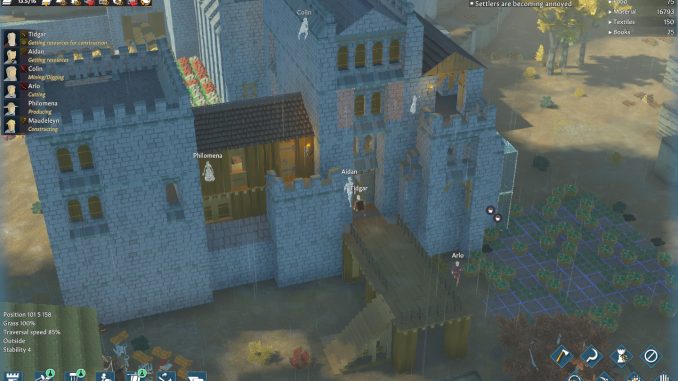
However, I will not go to the exact calculation formula in this guide. I will not provide any mathematical equation or go in detail of how to calculate each degree Celsius.
This guide consist of seven parts, it take around 5 – 10 minutes to read, I hope you enjoy what I wrote and thank you for all your time 😀
Rule 1: What Temperature Are We Going For?
Short answer: 5°C and below.
From what my experiment with Stew Piles that I place them in the stockpile zone around the town.
Here is the result:
1. In the field outside, 23.9°C, take 2 days to rot.
2. In the field outside (raining), 11.5°C, take 4 days to rot.
3. In the wooden house, 19.4°C, take 5 days to rot.
4. Underground, 7.2°C, take 20 days to rot.
5. Underground (deeper), 4.4°C, never rot.
6. Underground (deepest), -1.8°C, never rot.
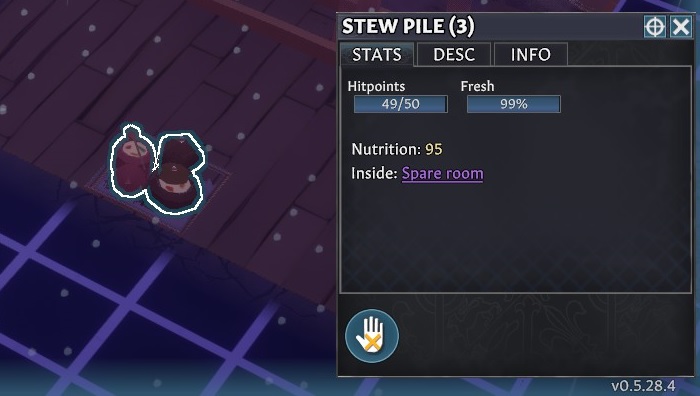
Rule 2: Watch Out Your Stair
Since the stair doesn’t separate rooms from each other, which mean if you dig the ground as I do in the screenshot below, it will count as one room, so this mean the lower floor will have the same temperature and the top floor.
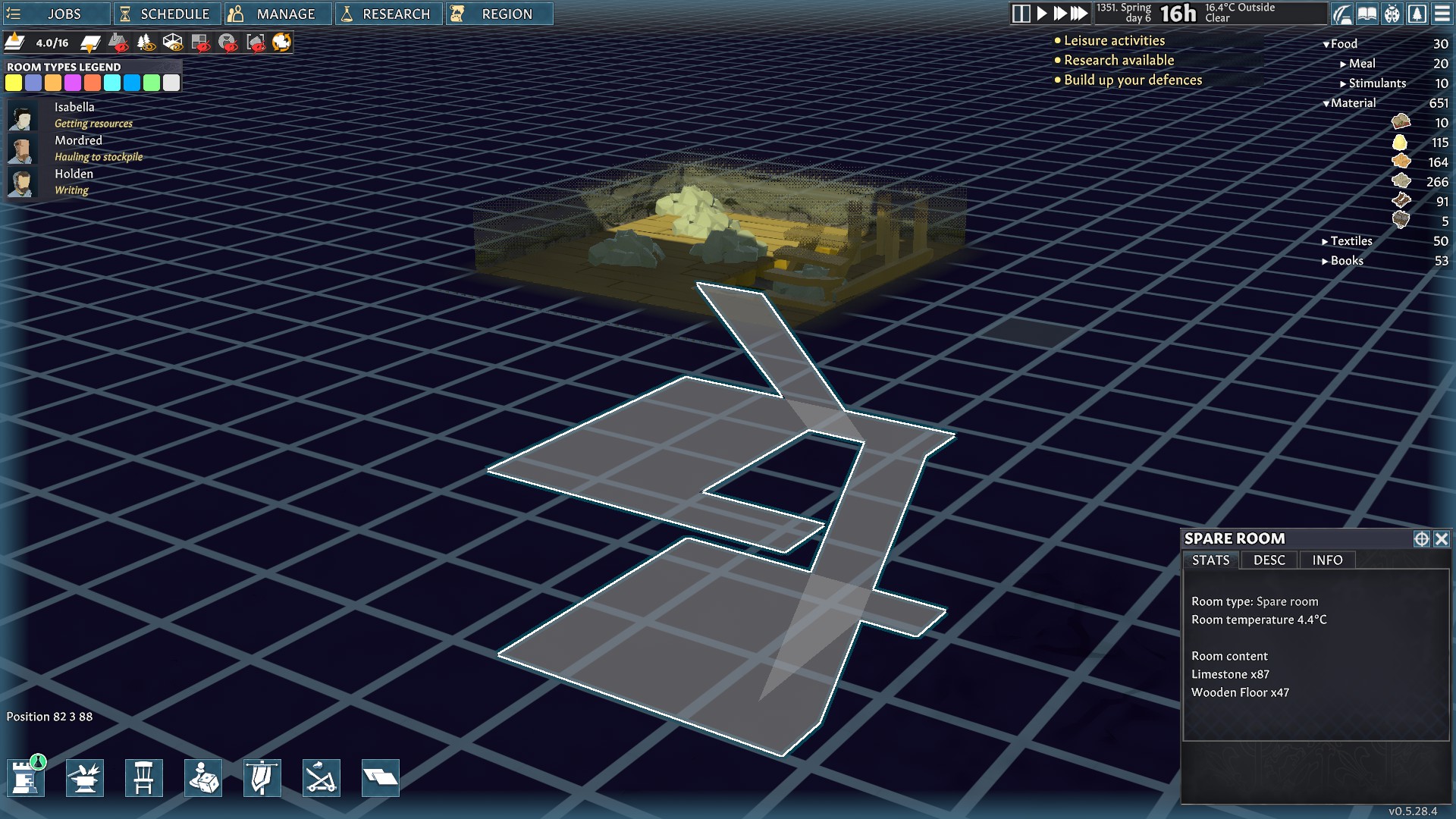
If you make a stair like this, it will be difficult for the temperature to go down when you dig down, because it will average the temperature from every floor. The simple solution is to create a new room at the lower floor and separate it from the main stair with door.
Rule 3: What Important Isn’t How Low the Floor Is, But What It’s Above
You may think that the temperature is lower because you are at the lower floor. But the true is, what make your room temperature drop is what it is that stay above your room.
Let’s see more example of what I did before I explain furthermore.
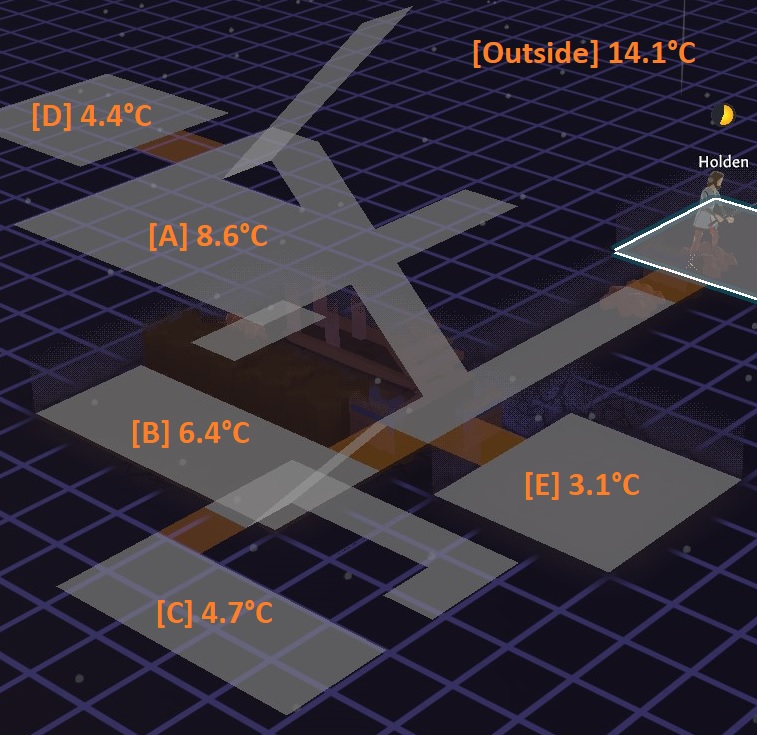
As you can see that room A, B, and C, are directly above from each other and separate by a simple wooden floor. While room D is in the same floor as room A, and room E is in the same floor as B.
You may noticed that room D and E have lower temperature than room C even it is on the upper floor. Why? Because there is a chunk of dirt above it to protect the heat rather than three slim floors of wood, which is very logical. This can be explain more in my drawing below.
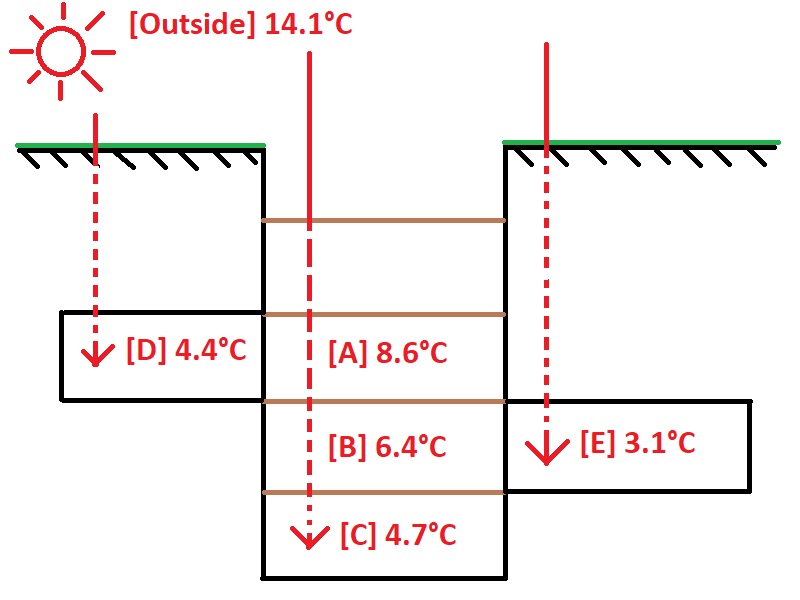
Rule 4: The Deep Is Also Count
By deep, I mean how long it is from the source of heat. The more faraway your storage room is, the more colder it is. This rule is heavily apply to the underground. Let’s see some more example:
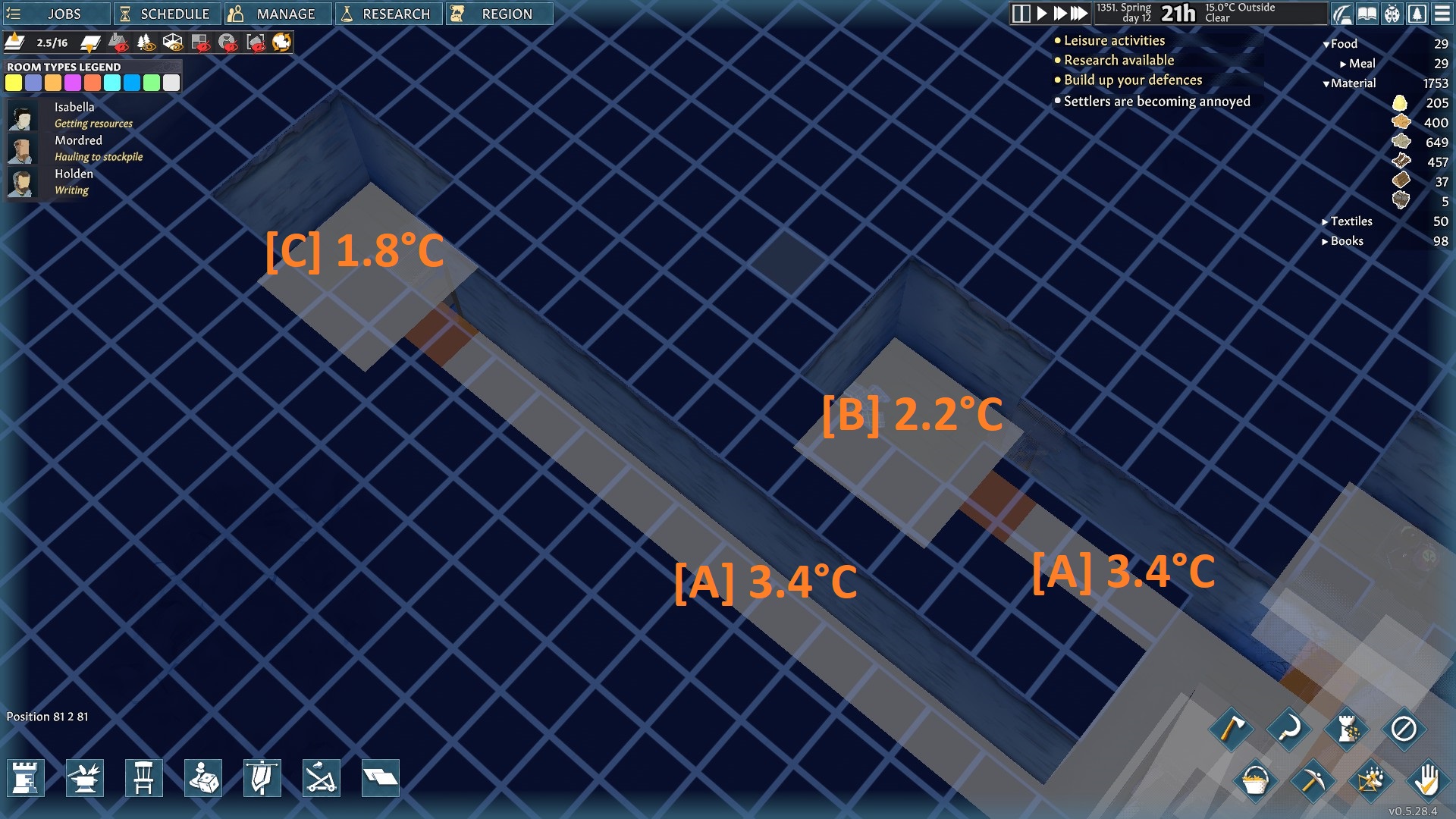
In the screenshot above, you can see that both room B and C are on the same level but room temperature is not the same. The only different is that Room C has a longer corridor than Room B, which mean it is deeper from the source of heat, and thus has a lower temperature.
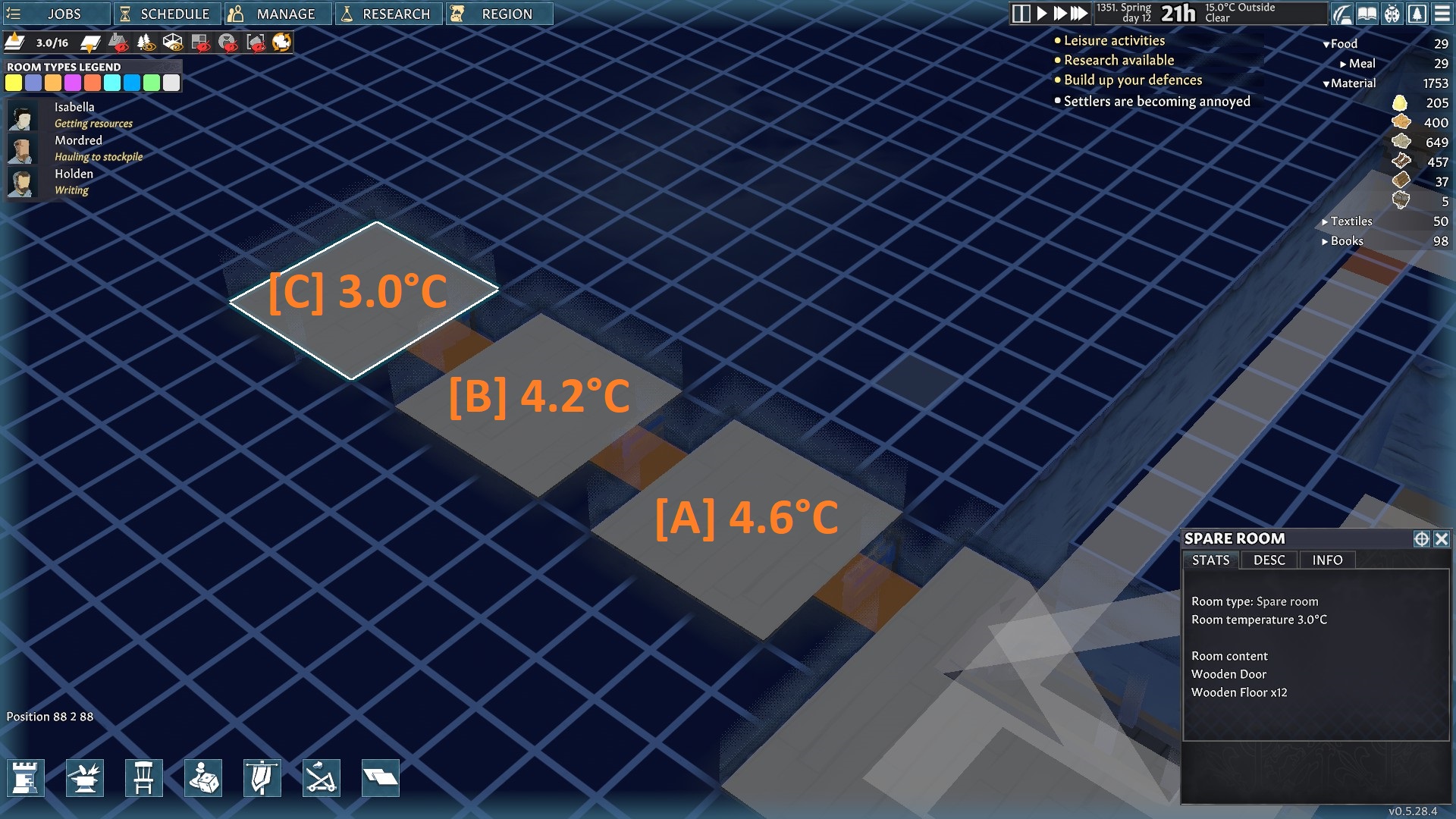
Another example, I create three rooms in the same level as sequence like in the screenshot above. You can see that each room have different temperatures especially the deepest one.
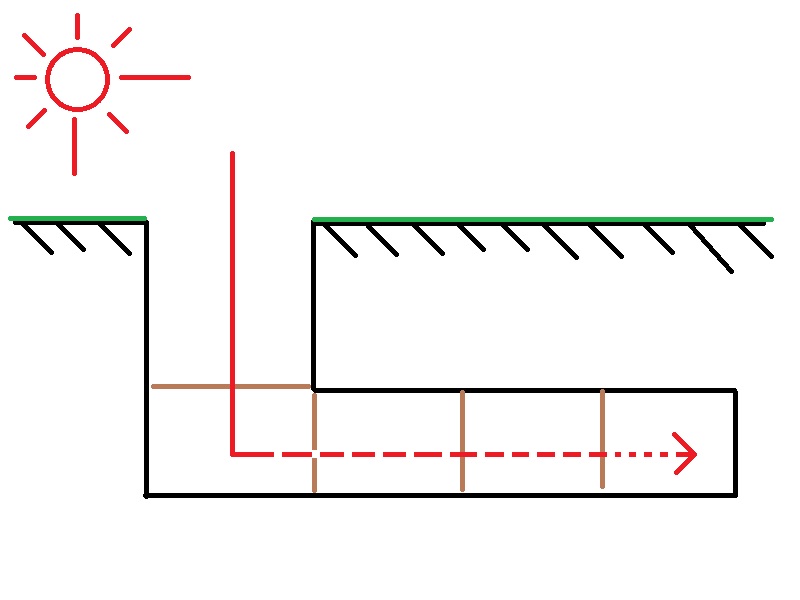
So, we can conclude from this rule that, the room temperature also count from how far your room is from the source of the heat.
Rule 5: Room Size Is Matter
While I experiment thing underground, I noticed something from the stair rule about expanding your room vertical and then the room temperature will be averaged from each floor.
Then, I wonder what the temperature will be if I expand horizontal. So, I create two building with the same material, same wooden floor, wall, door, and thatched roof. The only different is it size. Turn out the big one has lower room temperature at 19.5°C, while the smaller one has 21.9°C. Therefore, room size is matter somehow.
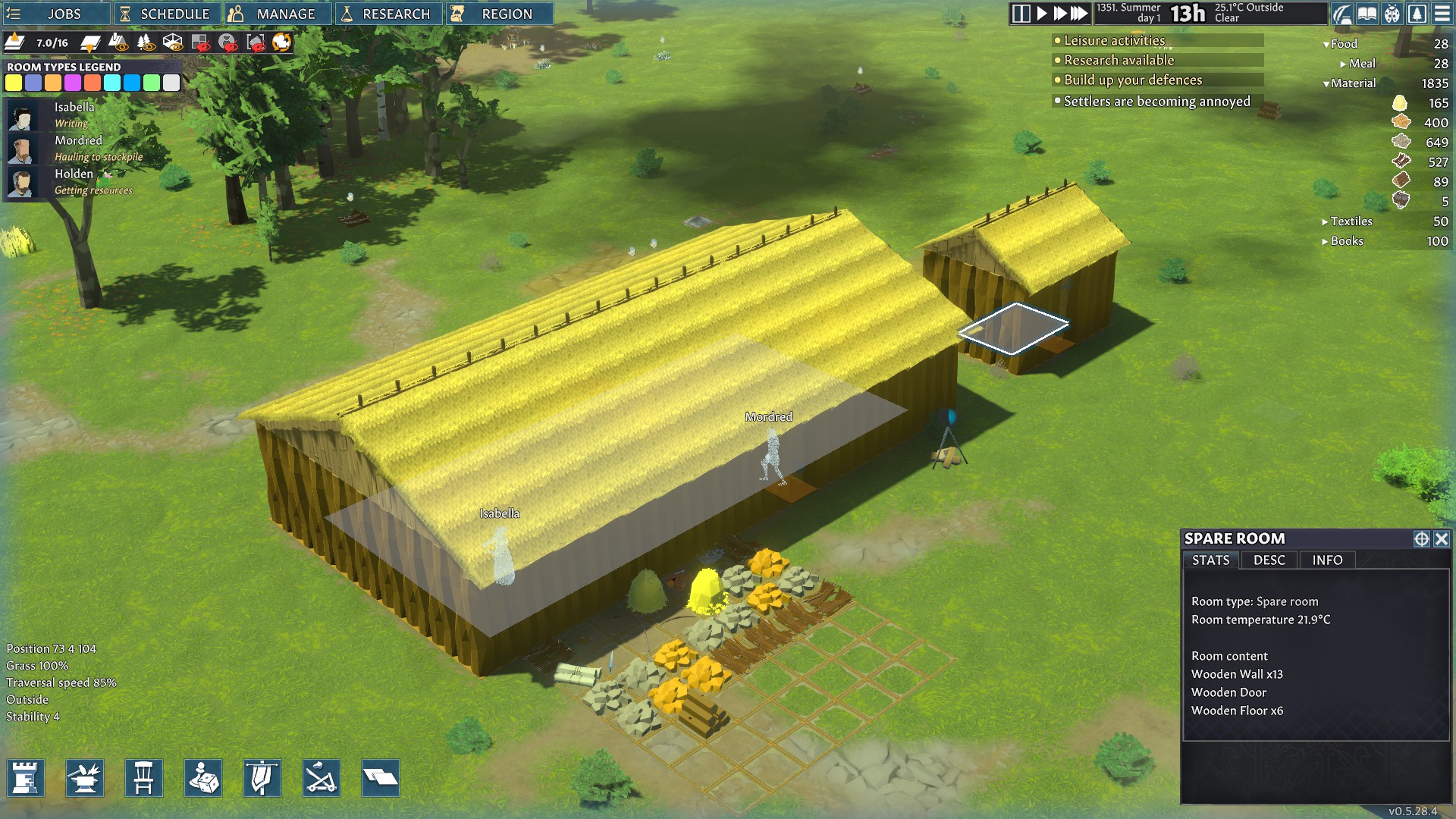
Rule 6: Cold Room Above Ground, Is It Possible?
Short Answer: Yes, but maybe not worth it.
So, from what we learn so far, we need a chunk of dirt above room because it is better than roof and floor in order to protect room from heat, and we need a very large wall to make our storage room deeper from the sun. And this is what I come up so far…
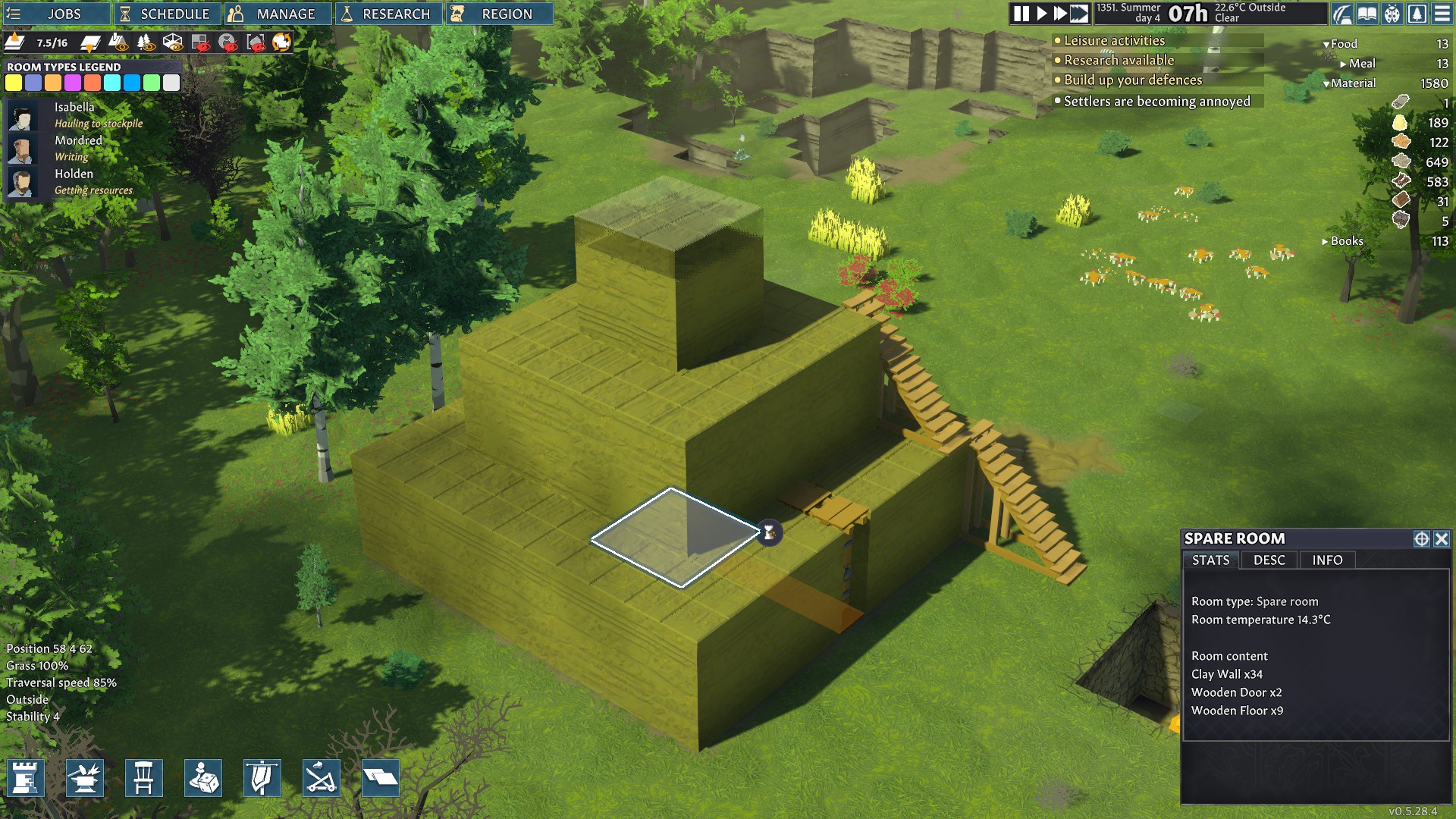
Yep. It is pyramid of dirt which allow you to store a 3×3 square in the center. I manage to reduce the temperature from 22.6°C to 14.3°C with this method. If I keep adding wall and roof, the temperature will slowly drop later.
But as you can imagine how much time and resource you need to complete it, which I think it isn’t worth the time and resource to do. Also, you can make a room bigger to reduce more heat, but you will need more material to make wall and roof also.
Rule 7: My Best Practical Solutions
So, in this last section, I will show you my best method to create the cold storage room. What I consider most is that these methods can be done in 1-2 day early game, with minimum resource needed, and can be done with any villagers you got.
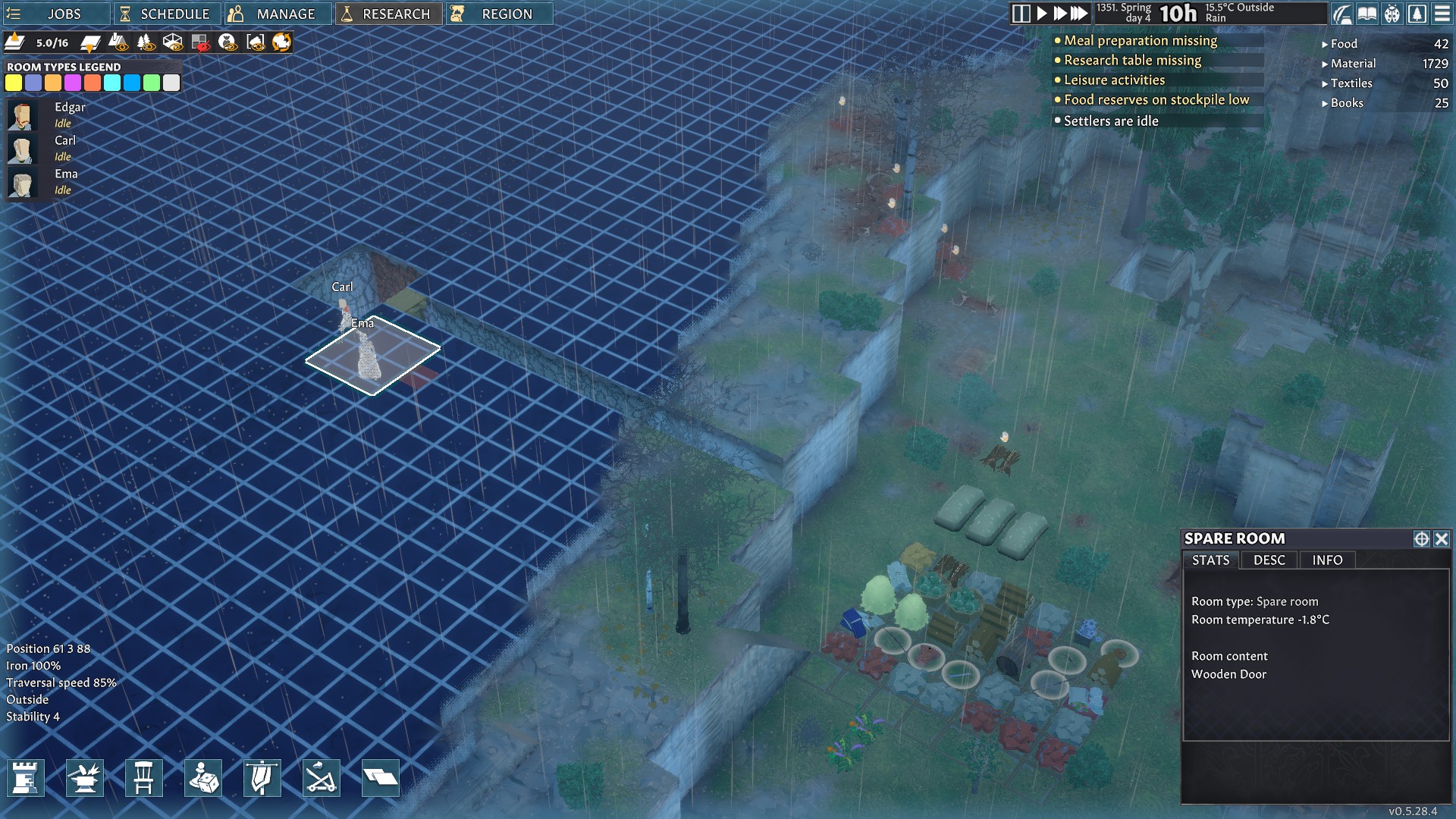
If you start your game in a mountain map, then considering put your food storage room in the nearest mountain step by digging a tunnel. The longer tunnel you dig, the more lower temperature you get. As you can see in my screenshot, I got -1.8°C room temperature from 15.5°C outside. But this method has one downside is that if you hit a metal vein while digging, it will take a much longer time, and since it’s a one block tunnel, so only one of your villager can dig at a time.
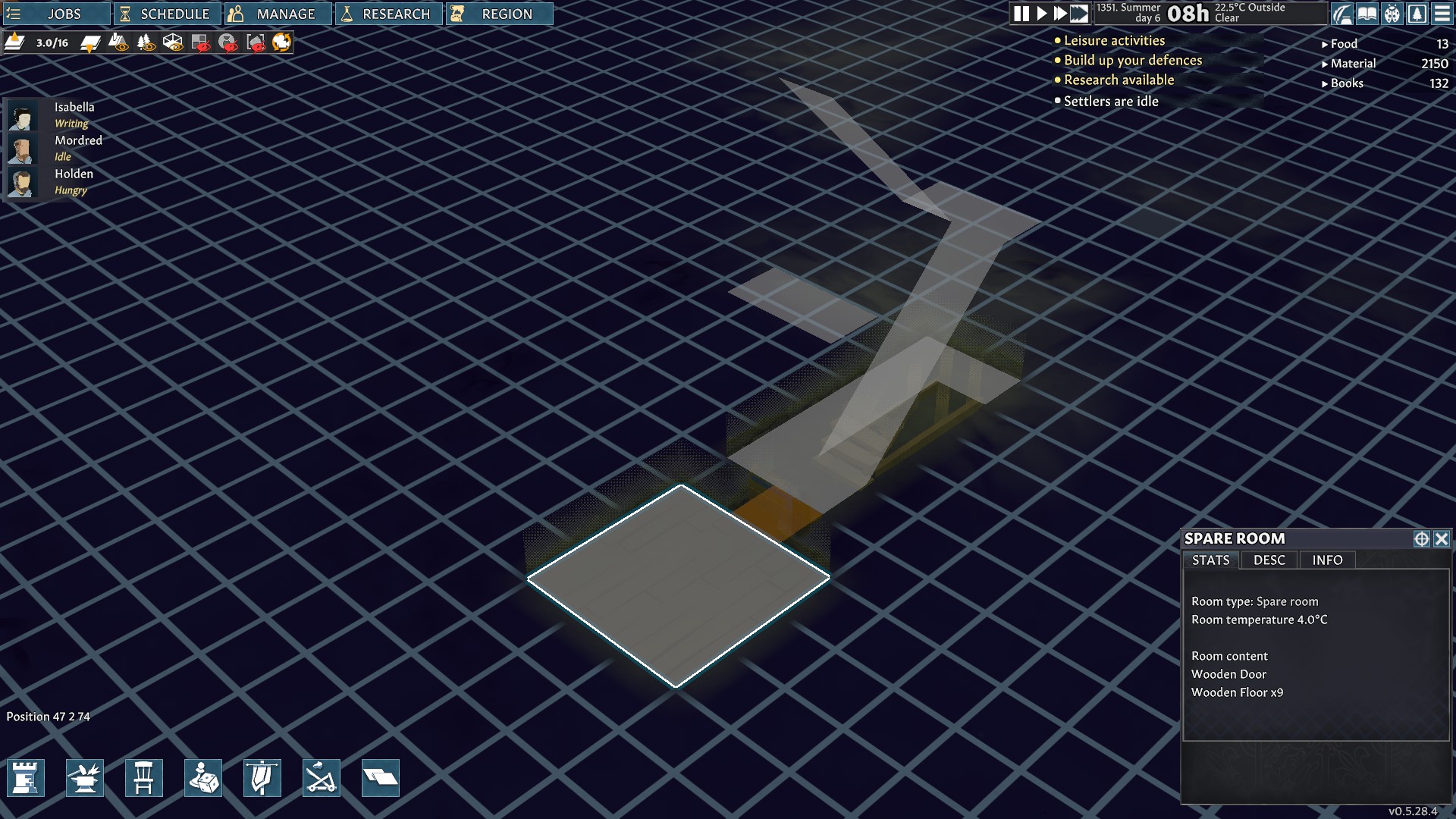
For any other scenario, just dig two floor down the ground as in the screenshot and create a room at the end of the stair, I can get 4°C from 22.5°C sunny day.
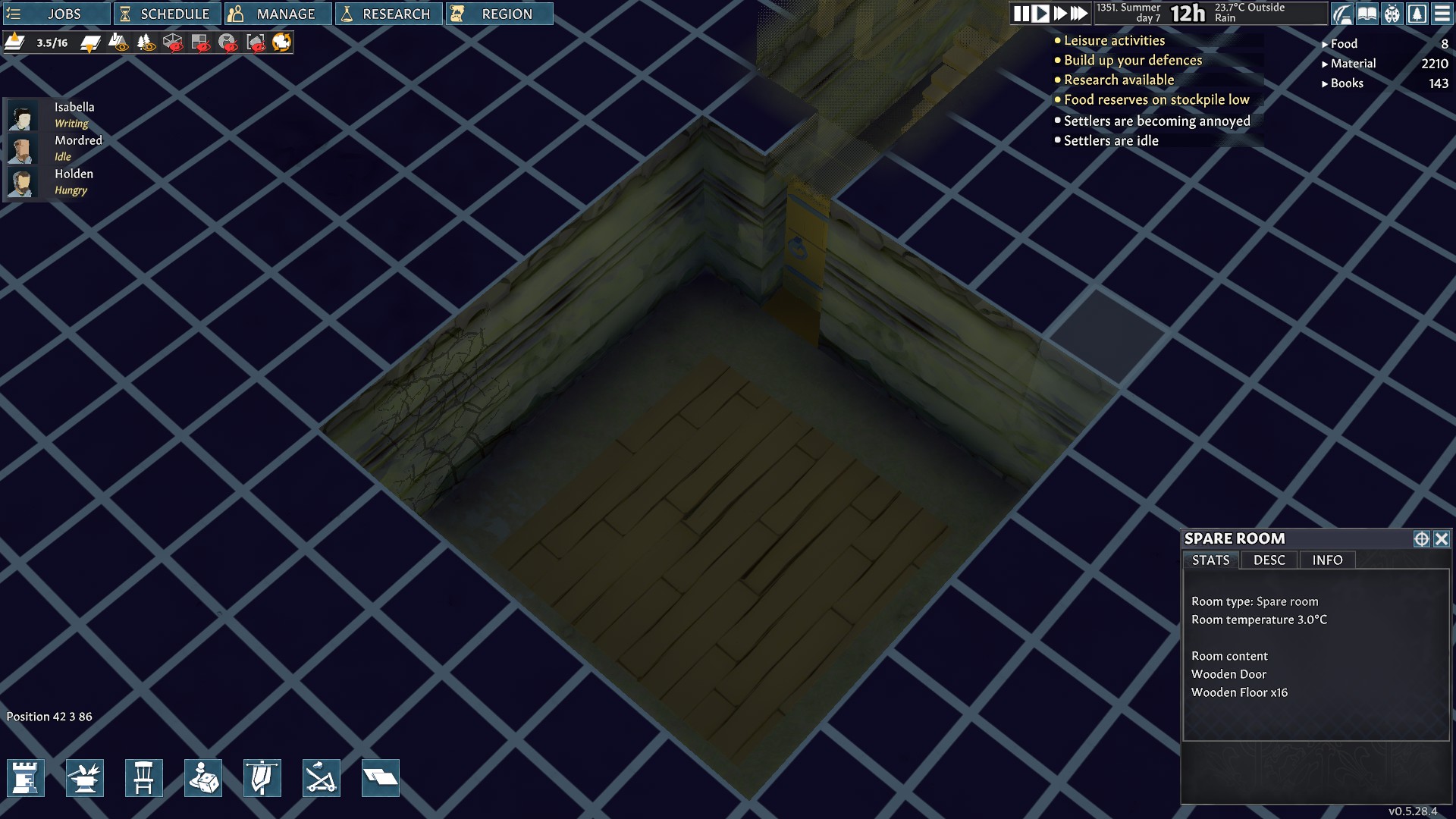
If you somehow still want to get lower temperature, you can create bigger room and remove floor around the room as in the screenshot above. Since those wooden floor did generate a heat somehow, removing them will cause the room to be cooler, but don’t forget that your food need to be on the wooden floor, so don’t zone your food storage on dirt. With this method, I did lower my temperature to 3°C.

As you can see, by removing another outer layer of wooden floor, I manage to lower my temperature again to 0.6°C. So, basically just keep expand the room without building the floor, the temperature will keep getting lower.
Well, this is the end of my guide, I hope you like what I wrote, and thank you for your time.
Let’s go gaming. 😀
This is all about Going Medieval – The Fundamental to Cold Room Temperature; I hope you enjoy reading the Guide! If you feel like we should add more information or we forget/mistake, please let us know via commenting below, and thanks! See you soon!
- All Going Medieval Posts List


Leave a Reply